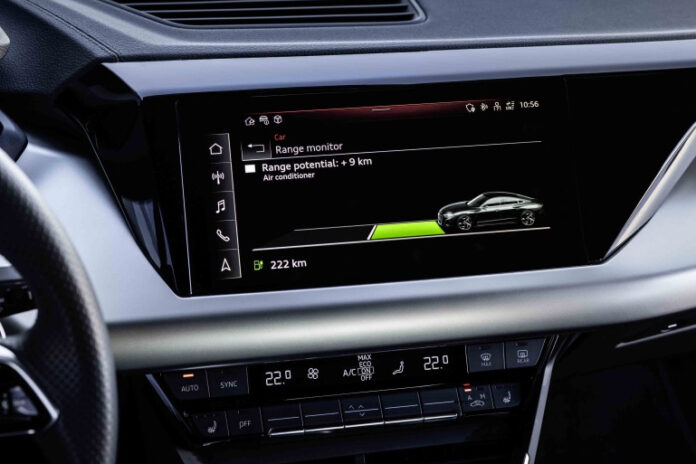The range of an electric vehicle is extremely variable. And even more so when the cold gets involved. Is there reason to be concerned?
The autonomy of an electric vehicle remains a delicate subject. Especially in winter. How many kilometers will be lost if the mercury drops below -20oC? “Between 30% and 50%,” electric vehicle owners cautiously argue on online forums. Difficult to be more precise considering the number of parameters to consider. The force of acceleration, the road conditions, the resistance of the tires, the speed, the wind and more have an influence on the sacrosanct autonomy. Heating too, which alone consumes a lot of energy.
Several tests carried out in recent years have quantified the impact of ambient temperature on the range of a series of electric vehicles. The conclusions, in some cases, could seem rather alarming, it is true. This is particularly the case of a study published in 2018 by the American Automobile Association (the American counterpart of the CAA). This concluded at the time that autonomy could drop by 41% on average when the cabin temperature was maintained at 21oC.
These losses of autonomy are still relevant today, but it is necessary to put them into perspective. In the group of vehicles tested, several were first generation electric vehicles (before 2018), therefore less efficient. In addition, the technological progress made since the publication of this study (2018, remember) has been exponential.
In addition to better efficiency, current electric vehicles offer (standard or optional) a heat pump. This proves – and not just for the most cautious – an essential to prevent the passenger compartment from transforming into a cold room. From then on, the experiences experienced by the “pioneers” of electricity that the heating absolutely had to be turned off to preserve autonomy belong to history. Well almost. The gasoline (or diesel) vehicle currently maintains the advantage in this area and devotes a greater proportion of calories to heating the passenger compartment, whereas an electric vehicle uses them mainly for movement.
However, just like a vehicle with an internal combustion engine, an electric propulsion system remains sensitive to cold. Not at startup, however, which is, let’s face it, practically infallible.
To maximize range in winter, it is recommended to opt for narrower tires and check their pressure regularly. This must be optimal to reduce rolling resistance. Remember that the presence of a roof box increases the aerodynamic drag coefficient (Cx), which can influence the range.
More sophisticated than ever, the electric vehicle does not fear winter, as long as certain instructions are followed.
With a more efficient battery encased in its own architecture, the electric vehicle provides its owner with tools and advice to better resist the cold. That said, just like an internal combustion vehicle, the electric vehicle will have to refuel more frequently during the cold season. And just like gasoline or diesel engines, it is imperative to keep the electron tank above 20% (this is a minimum) at all times.
To minimize the impact of cold on the battery, it is important to familiarize yourself with the different tools offered by manufacturers’ applications. These can be consulted on a smartphone and allow you to adjust the temperature of the passenger compartment while it is still connected to a terminal.
The energy consumed to then maintain this temperature once underway will generally be less than that necessary to reach it.
Difficult to maintain room temperature on a long run? Possible, but rather than raising the temperature, make sure, if necessary, to first activate the heated functions of the steering wheel and seats. These consume less energy. Also, if the vehicle is equipped with a multi-zone air conditioning/heating system, be sure to raise the temperature in the occupied zones only. Then, direct the corresponding vents towards the chest and arms. Turn on the foot heater.
Finally, (re)reading the owner’s manual before winter arrives is always a good idea. Some models have very specific instructions for use (leave the vehicle plugged in when inactive in very cold weather, for example).
To travel with confidence on a road surface with a low coefficient of adhesion, four-wheel drive is better than two. A reasoning that does not necessarily apply to an electric vehicle.
Ioniq 5, Volkswagen ID.4, Nissan Ariya, to name just these three, offer a four-wheel drive mode, that is to say an electric motor on each axle. Driving assistance which, just like on a combustion engine vehicle, has an impact on efficiency.
Electric vehicles with one engine rather than two actually cover greater distances. Additionally, they are financially more affordable.
Even if these are in the back? Yes, on the condition that the vehicle does not have, for example, to climb slopes that are too steep (the Beaver Hall hill in Montreal does not count).
The weight and the way in which it is distributed contribute to making electric driving – even with two-wheel drive – perfectly neutral and stable during the white season. If this is the route you take, then don’t skimp on the quality of the tires. The best, nothing less.
However, all-wheel drive is not a useless artifice. With two drive wheels (front or rear), the power and immediacy of an electric propeller invite you to carefully dose the accelerator. The presence of four-wheel drive allows this power to be transferred more easily and also provides an increased safety net. This explains why the most powerful electric vehicles offer all-wheel drive from the outset.















